Hip hop art culture is a vibrant and dynamic aspect of contemporary culture, encompassing a wide range of creative expressions that extend far beyond music. This rich cultural tapestry includes visual arts, performative elements, and graffiti, each playing a crucial role in shaping the identity of hip hop culture. From intricate murals to groundbreaking performances, the art within hip hop culture reflects its deep-rooted history and universal appeal.
The hip hop art culture is characterized by its fusion of creativity, storytelling, and social commentary. It encompasses various forms of artistic expression, including visual arts, which feature bold and expressive styles that often reflect the struggles, triumphs, and experiences of those within the hip hop community. Performative elements, such as DJing and MCing, add another layer of dynamism, blending audio and visual storytelling to create immersive experiences. At the same time, graffiti has long been a cornerstone of hip hop culture, serving as both a medium for self-expression and a means of preserving the cultural heritage of urban communities.
Exploring the four arts of hip hop—visual arts, DJing, MCing, and breakdancing—we gain insight into the multifaceted nature of this cultural phenomenon. Each art form contributes uniquely to the overall experience of hip hop culture, creating a cohesive and impactful narrative that resonates across generations and geographies. Understanding the origins and evolution of hip hop culture provides valuable context for appreciating its global influence, from music and fashion to film and literature.
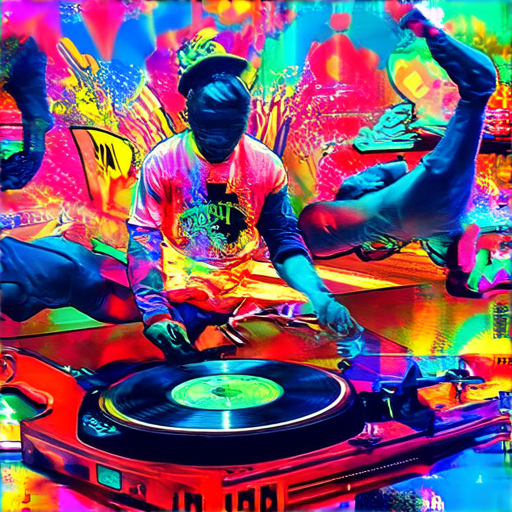
Types of Art in Hip Hop Culture
Hip hop culture encompasses a diverse range of artistic expressions that reflect its rich history and creative spirit. Here are the primary forms of art associated with hip hop:
Graffiti Art
Graffiti has been a cornerstone of hip hop culture since its inception. Artists use public spaces to create intricate murals and tags, often blending elements of urban life, social commentary, and personal style. Names like Jean-Michel Basquiat and Futura 2000 are synonymous with this art form.
Visual Art
Visual artists draw inspiration from hip hop’s icons, lyrics, and cultural milestones. Exhibitions frequently feature works that sample music tracks, depict famous rappers, or explore themes of identity and struggle. This form often appears in galleries and museums.
Street Art
Street art, including murals and installations, plays a significant role in hip hop communities. These pieces often address social issues and celebrate local heroes, serving as both art and storytelling tools.
Fashion
Hip hop fashion is a dynamic art form that combines bold designs, vibrant colors, and cultural motifs. Designers like Virgil Abloh and Jeremy Scott channel the energy of hip hop through their collections, often incorporating iconic imagery and lyrics.
Performance Art
Breakdancing, beatboxing, and freestyle rap are performative arts rooted in hip hop. These talents use their bodies and voices to tell stories, express emotions, and showcase technical skills, making them integral to live performances.
DJing
While not traditional art, DJing is a skillful creation of soundscapes that blend genres. This art form requires precision and creativity, transforming vinyl records into unique auditory experiences.
Digital Art
With advancements in technology, digital artists create hip hop-inspired works using software. These pieces may include animations, digital paintings, or even NFTs, bridging the gap between traditional and modern art forms.
Influence and Evolution
Hip hop art has had a global impact, influencing fashion, film, and other industries. Over time, it has evolved, embracing new technologies and reaching broader audiences while staying true to its roots.
Hip hop art is not just a reflection of culture but a driving force behind its evolution, continually shaping and being shaped by the world around it.
What Type of Culture is Hiphop?
Hiphop culture is a multifaceted cultural movement that originated in the United States, particularly within the African American community, during the late 1970s in New York City. It has evolved into a global phenomenon, blending music, art, fashion, and social expression.### Origins and EvolutionHiphop culture emerged from the grassroots level, serving as a means of expression for marginalized communities. It has since grown into a significant cultural force, influencing various aspects of contemporary life, including music, film, fashion, and technology.### Components of Hiphop Culture1. **Music**: At its core, hiphop encompasses genres like rap, DJing, beatboxing, and sampling. These forms draw from African, Latin, and Caribbean musical traditions, creating a unique cultural tapestry.2. **Art**: Visual elements such as grafitti, street art, and fashion play crucial roles in expressing social and political messages, often tied to the Black Power Movement.3. **Lifestyle**: Hiphop culture extends beyond music to include specific fashions, slang, and social practices, creating a distinct lifestyle among its participants.4. **Dance**: Associated dances like breaking and popping highlight the physical expression integral to hiphop culture.### Global InfluenceOver time, hiphop has transcended its roots to become a global cultural phenomenon. It has influenced popular culture, with its elements appearing in music, fashion, and media worldwide. Hiphop has also inspired various subcultures and social movements, reflecting its ongoing impact on society.By understanding these facets, we can appreciate the rich complexity of hiphop culture and its profound influence on contemporary life.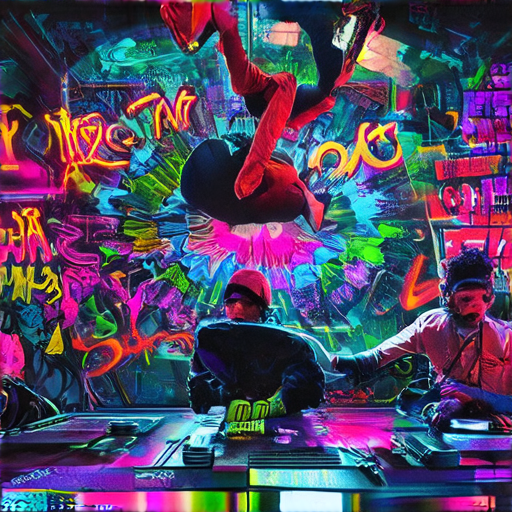
The Four Arts of Hip-Hop
Hip-hop culture is deeply rooted in four core elements, each contributing uniquely to its vibrant identity. These elements are often referred to as the “four pillars” of hip-hop, forming the foundation of its creativity and expression.1. **MCing (Rapping)** The backbone of hip-hop, MCing involves lyrical storytelling, rhythm, and flow. Rappers use their words to tell stories, drop knowledge, or simply showcase their skill. From the streets of the Bronx to global stages, MCs have redefined how words can paint pictures and move crowds.2. **DJing (Turntablism)** DJs spin vinyl records, scratching and mixing tracks to create beats and rhythms. Turntabling is not just about playing music—it’s about manipulating it to create something entirely new. This art form has evolved into a competitive sport, with DJs showcasing their technical skills and creativity.3. **Breakdancing (Bboy/Bgirl)** Breakdancing, or b-boying/b-girling, is the physical aspect of hip-hop. Dancers move in ways that mimic the rhythm of the music, performing complex moves with precision and style. It’s a way to express energy, emotion, and connection to the music.4. **Graffiti Art** Graffiti is the visual expression of hip-hop culture. Artists use spray paint, markers, or other tools to create murals and street art that reflect the culture’s energy and identity. Graffiti has evolved from illegal street art to a recognized form of urban art, seen in galleries and public spaces worldwide.These four arts—MCing, DJing, breakdancing, and graffiti—are not just separate entities; they’re interconnected, each feeding off the others to create a dynamic and evolving culture. Whether you’re a fan of the music, the dance, the art, or the storytelling, hip-hop offers something for everyone.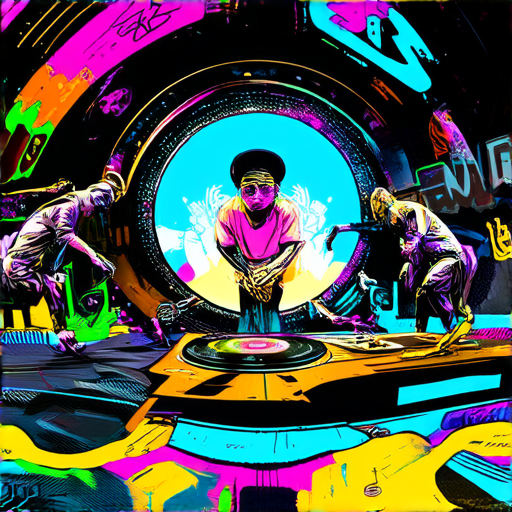
How is Graffiti a Part of Hip Hop Culture?
Graffiti has long been a cornerstone of hip-hop culture, serving as a visual representation of the art form’s roots and values. Originating in the late 1960s and 1970s in New York City, graffiti emerged as a medium for urban expression, mirroring the raw energy and social commentary prevalent in hip-hop music and street culture.
The connection between graffiti and hip-hop extends beyond mere aesthetics. Both mediums share a similar DIY ethos, emphasizing creativity and defiance in the face of systemic challenges. Graffiti artists, often referred to as writers, use public spaces as their canvas, much like hip-hop artists use beats and rhymes to convey stories and emotions.
- Cultural Expression: Graffiti has historically served as a tool for marginalized communities to assert their identity and voice. In the context of hip-hop, this is reflected in the use of tags, styles, and themes that resonate with urban experiences.
- Social Commentary: Many graffiti pieces tackle issues like inequality, political corruption, and societal neglect—topics frequently addressed in hip-hop lyrics and storytelling.
- Historical Context: The rise of hip-hop coincided with the explosion of graffiti in cities like New York, Los Angeles, and Philadelphia. Artists like Jean-Michel Basquiat blended painting and street art, influencing both mediums to intersect creatively.
- Influence on Art and Media: Graffiti-inspired designs and imagery have become synonymous with hip-hop fashion, record covers, and even film posters, further entrenching its role in the culture.
Graffiti remains a vital part of hip-hop culture, symbolizing freedom of expression and the enduring spirit of urban innovation. Its presence continues to inspire artists and fans alike, bridging the gap between music and visual art in a uniquely powerful way.
What Are the Four Elements of Hiphop Graffiti Art?
Graffiti art, a cornerstone of hip-hop culture, is defined by four primary elements that contribute to its unique aesthetic and cultural significance:
- Style and Technique : Graffiti artists use distinctive styles, often characterized by bold lettering, intricate patterns, and innovative use of colors and fonts. This element reflects personal creativity and influences from various art movements.
- Subject Matter : Themes commonly include social issues, cultural icons, personal expressions, or motivational messages, often tied to the experiences and perspectives of the hip-hop community.
- Color and Contrast : Vibrant hues, sharp contrasts, and clever use of negative space are hallmarks of graffiti art, creating visually striking and impactful pieces.
- Message and Impact : Graffiti art frequently conveys a message or emotion, serving as a medium for self-expression and societal commentary, while also inspiring admiration and appreciation for the craftsmanship involved.
The integration of these elements creates a dynamic and evolving form of art that continues to influence popular culture and inspire new generations of creators.
For more insights into the world of hip-hop graffiti, visit AbstractHipHop.com .
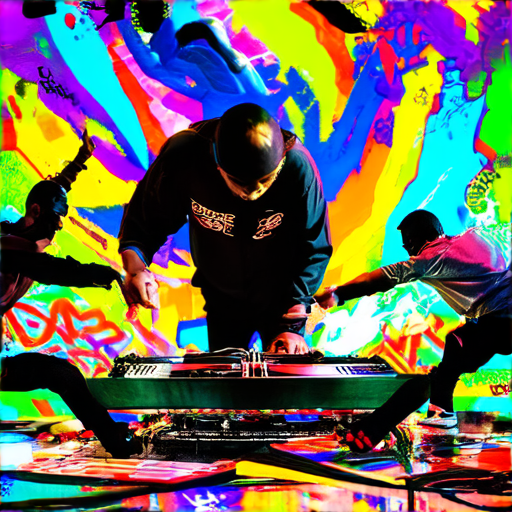
What Culture Started Graffiti?
Graffiti has its roots in ancient civilizations, serving various purposes across different cultures. Here’s a breakdown of its origins and evolution:1. **Ancient Civilizations**: Graffiti traces back to ancient times, with examples found in Egypt, Greece, and Rome. These early forms included hieroglyphs and wall paintings, used for communication, marking territory, or storytelling.2. **Renaissance Period**: During the Renaissance, artists like Michelangelo began signing their work, introducing a form of graffiti as a signature. This practice continued among painters and writers, adding a personal touch to their creations.3. **Modern Era**: The 20th century saw graffiti evolve into a dynamic urban art form. Artists like Banksy and Jean-Michel Basquiat emerged, blending graffiti with their unique styles. Their work expanded beyond signatures, addressing social and political issues, making it a powerful tool for expression and commentary.Thus, graffiti’s history is rich and diverse, reflecting the creativity and social consciousness of various cultures over millennia.

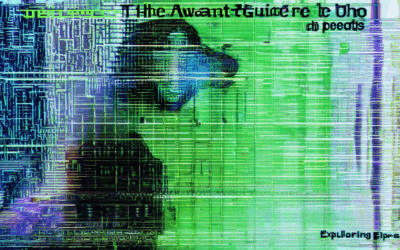
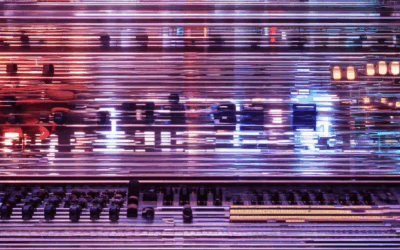
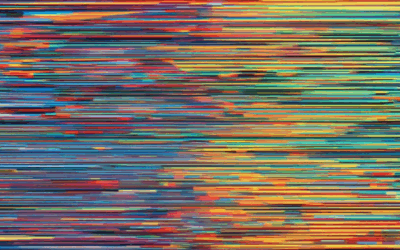
0 Comments